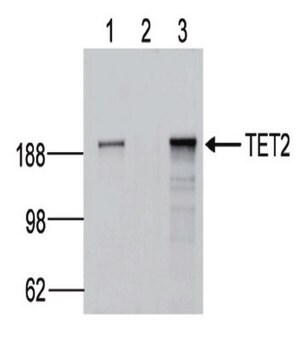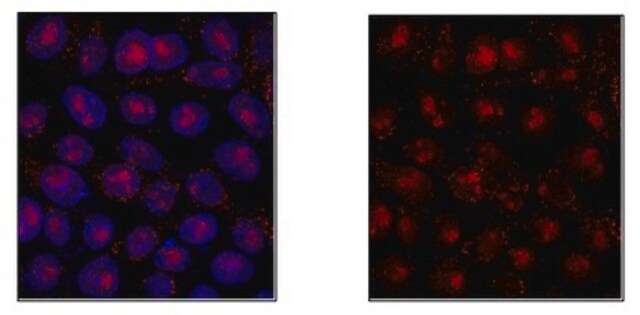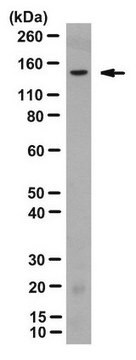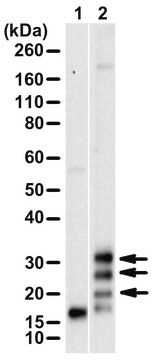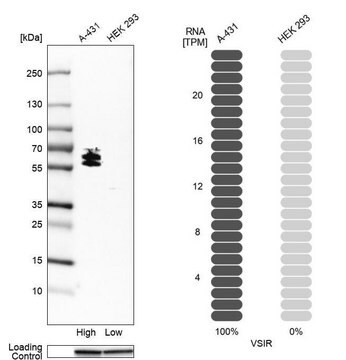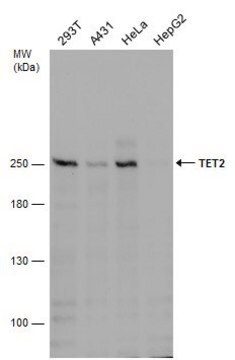MABE1132
Anti-TET2 Antibody, clone 9F7
clone 9F7, from rat
Sinónimos:
Methylcytosine dioxygenase TET2, Protein Ayu17-449
About This Item
Productos recomendados
origen biológico
rat
Nivel de calidad
forma del anticuerpo
purified immunoglobulin
tipo de anticuerpo
primary antibodies
clon
9F7, monoclonal
reactividad de especies
mouse
técnicas
ELISA: suitable
immunocytochemistry: suitable
immunoprecipitation (IP): suitable
western blot: suitable
isotipo
IgG2aκ
Nº de acceso NCBI
Nº de acceso UniProt
modificación del objetivo postraduccional
unmodified
Información sobre el gen
mouse ... Tet2(214133)
Descripción general
Especificidad
Inmunógeno
Aplicación
Epigenetics & Nuclear Function
Chromatin Biology
Immunoprecipitation Analysis: A representative lot immunoprecipitated endogenous TET2 from murine embryonic stem cell (mESC) lysate. Subsequent LC-MS/MS analysis detected the presence of co-immunoprecipitated glycosyltransferase OGT (Bauer, C., et al. (2015). J. Biol. Chem. 290(8):4801-4812).
ELISA Analysis: Clone 9F7 hybridoma culture supernatant was confirmed for its immunoreactivity against His-tagged murine TET2 by ELISA (Bauer, C., et al. (2015). J. Biol. Chem. 290(8):4801-4812).
Calidad
Immunocytochemistry Analysis: A 1:100 dilution of this antibody detected TET2 in mouse embryonic stem cells (ESCs).
Descripción de destino
Forma física
Almacenamiento y estabilidad
Otras notas
Cláusula de descargo de responsabilidad
¿No encuentra el producto adecuado?
Pruebe nuestro Herramienta de selección de productos.
Código de clase de almacenamiento
12 - Non Combustible Liquids
Clase de riesgo para el agua (WGK)
WGK 1
Punto de inflamabilidad (°F)
Not applicable
Punto de inflamabilidad (°C)
Not applicable
Certificados de análisis (COA)
Busque Certificados de análisis (COA) introduciendo el número de lote del producto. Los números de lote se encuentran en la etiqueta del producto después de las palabras «Lot» o «Batch»
¿Ya tiene este producto?
Encuentre la documentación para los productos que ha comprado recientemente en la Biblioteca de documentos.
Nuestro equipo de científicos tiene experiencia en todas las áreas de investigación: Ciencias de la vida, Ciencia de los materiales, Síntesis química, Cromatografía, Analítica y muchas otras.
Póngase en contacto con el Servicio técnico